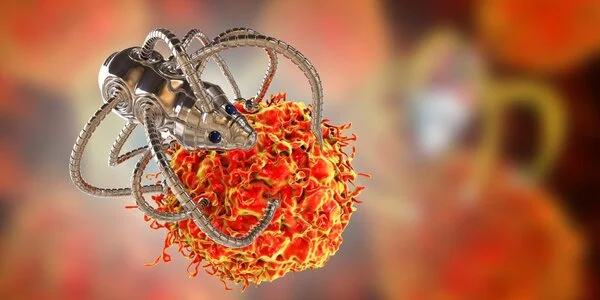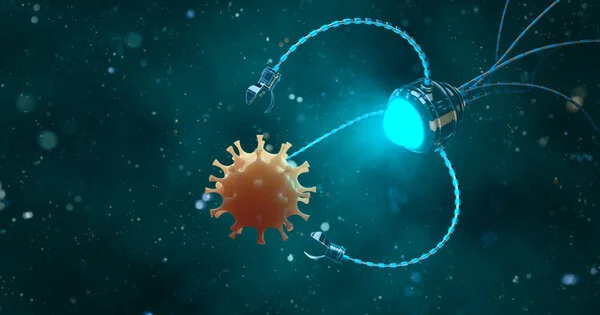According to new research from the University of Essex, swarms of microrobots injected into the human body could unblock internal medical devices and avoid the need for additional surgery. Researchers have successfully developed molecular robots capable of swarming together to perform tasks five times more efficiently than individual “microrobots.”
The research marks the first time that scientists have used magnetic microrobotics to remove deposits from shunts, which are common internal medical devices used to treat a variety of conditions by draining excess fluid from organs.
Shunts are prone to failure, which is frequently caused by sediment buildup. The sediment not only narrows and obstructs the flow of liquid through the shunt, but it also affects its flexibility. As a result, patients will require repeated, invasive surgeries throughout their lives, either to replace the shunt or to remove the blockage with a catheter.
Once the magnetic microrobots are injected into the shunt, they can be moved along the tube to the affected area using a magnetic field produced by a powerful magnet on the body’s surface. The microrobot swarm can then be moved to scrape away the sediment, clearing the tube.
Dr. Ali Hoshiar
This new study, led by microrobotics expert Dr. Ali Hoshiar from the University of Essex’s School of Computer Science and Electronic Engineering, suggests that there may be a wireless, non-invasive alternative to clearing the blockage in a shunt.
Dr. Hoshiar and his colleagues demonstrated in the IEEE Transaction on Biomedical Engineering journal that a swarm of hundreds of microrobots made of nano size magnetic nanoparticles injected into the shunt could remove the sediment instead.
“Once the magnetic microrobots are injected into the shunt, they can be moved along the tube to the affected area using a magnetic field produced by a powerful magnet on the body’s surface,” Dr. Hoshiar explained. “The microrobot swarm can then be moved to scrape away the sediment, clearing the tube.”
“The non-invasive nature of this method is a considerable advantage to existing methods as it will potentially eliminate the risk of surgery and a surgery-related infection, thereby decreasing recovery time.”

With each microrobot smaller than the width of a human hair, once the swarm has done its job, it can either be guided to the stomach via a magnetic field or bodily fluid, so they leave the body naturally. Because the microrobots have very high biocompatibility they will not cause toxicity.
Collective behavior is common in nature, where schools of fish and insect swarms can perform complex tasks. Bioengineers are inspired by the collective intelligence found in natural swarms to create a wide range of microrobots for a variety of applications. The researchers created an actuation strategy that used magnetic particle swarms to precisely embolize blood flow inside a targeted region for selective embolization in an animal model. The research provided a deeper understanding of micro-robotic swarm behavior under physiological conditions, as well as a proof-of-concept study.
The study also discovered a link between the strength of the magnetic field and the success of scraping the sediment out of the shunt. This is the first proof-of-concept experiment using microswarms to open a shunt blockage. The next step in this research will be to collaborate with clinicians to conduct trials. The researchers are also investigating how the concept can be applied in other contexts.
The researchers accomplished selective embolization by generating microrobotic swarms on demand to block blood vessels in a specific region. For distribution in blood capillaries, they used super-paramagnetic particles with diameters smaller than red and white blood cells. The researchers coated the microparticles in thrombin to convert soluble fibrinogen in blood into fibrin meshes to contain red blood cells with the particles.





